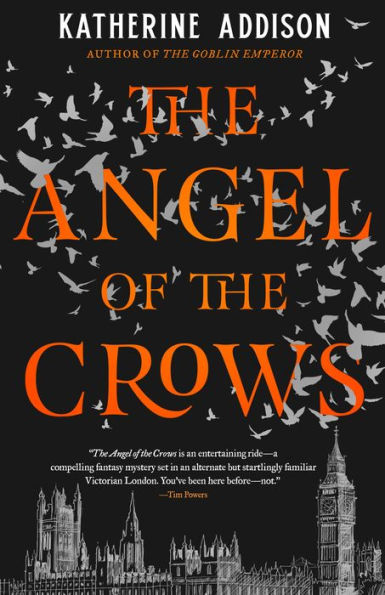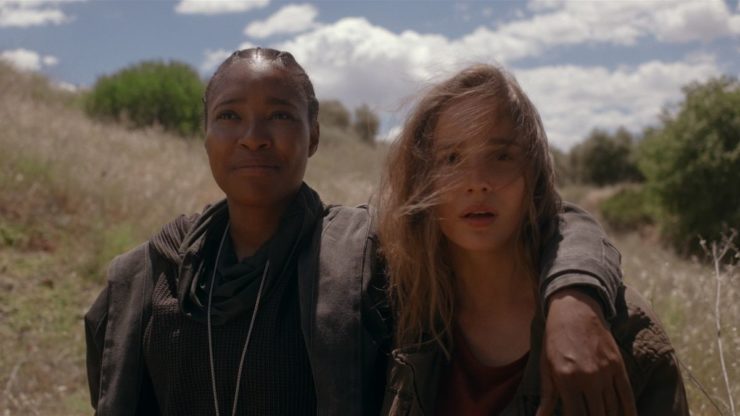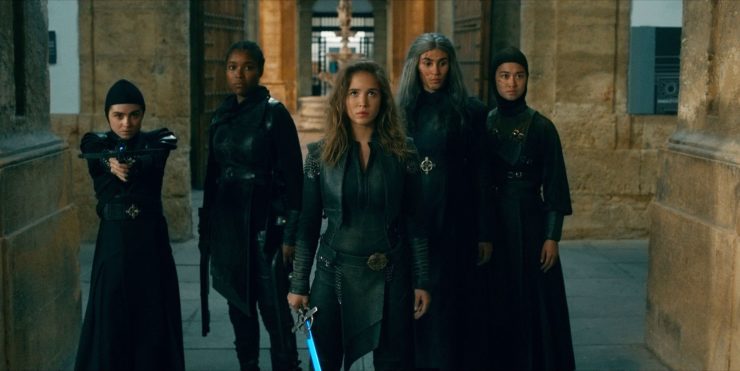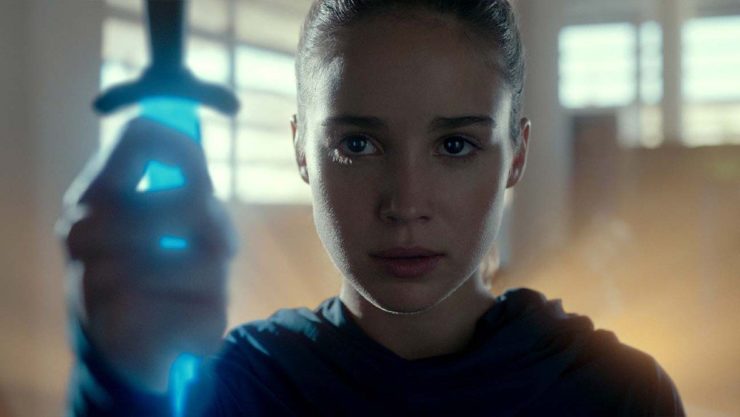Based on a comic book called Warrior Nun Areala created by Ben Dunn that was published in the 1990s and 2000s, the first season of the new Netflix series Warrior Nun has gone live. It’s overall a good series, but it falls short of greatness due to its reliance on two extremely tired and bad tropes. However, discussing one, possibly both, of them requires a big-ass SPOILER WARNING, so consider yourself warned that this review will discuss all ten episodes of the first season, including the tenth that has major revelations.
SPOILERS for all ten episodes of the first season of Warrior Nun……
The 1990s was the height of the “bad-girl” craze: Shi, Witchblade, Barb Wire, and so on. In the midst of this, Ben Dunn gave us Warrior Nun Areala, about a young nun who serves as the chosen one who fights demons, a legacy from a medieval nun named Areala. She fights alongside other combat-trained nuns as part of the Order of the Cruciform Sword (OCS). The modern-day incarnation is named Shannon Masters, and she fights monsters in New York City. (Dunn’s inspiration was an order called Fraternité Notre-Dame, which established a chapter in the East Harlem neighborhood of New York City in 1991. One of the nuns working in that chapter was a black belt in Judo and also studied Taekwondo, and the other nuns in the chapter all trained in self-defense.)
The Netflix series makes several changes from the comic, starting with the protagonist. In the series, Shannon Masters dies before the first episode is over, and the “halo” that gives the Warrior Nun her powers is placed inside the corpse of a nineteen-year-old quadriplegic named Ava Silva (played with verve and charm by Alba Baptista—a Portuguese actor, this is her first English-language role, and I would never have guessed she wasn’t as American as her character from her performance, as her American accent is spot on). To everyone’s surprise, the halo resurrects her, and also enables her to walk for the first time since she was seven and was in a car accident that killed her mother and left her stuck in an orphanage.
Buy the Book


The Angel of the Crows
In addition, the action of the series is moved to Spain, mostly taking place in Andalusia, as well as some nearby small towns, with the climax of the season set in the Vatican.
The plot of the season plays out slowly over ten episodes, and involves several different elements. The mission in which Shannon was killed was supposed to be a simple retrieval, but was instead an ambush, where the bad guys were armed with bullets tipped with Divinium, a rare metal that is the only thing that can permanently harm the Warrior Nun. Ava runs away from the church—now that she can run—and tries to figure out what to do with her life. A scientist named Jillian Salvius is trying to obtain Divinium of her own in order to open a quantum tunnel to another dimension (and is also trying to track down Ava for her own purposes). Cardinal Duretti, an agent of the Vatican who oversees the OCS, is concerned about the halo being stuck in a girl who doesn’t even want it and isn’t trained, and he also has ambitions both toward running the OCS more directly and becoming the next pope. Shotgun Mary, an OCS member who is not a nun, but who was Shannon’s closest friend and the member whom Father Vincent (the leader and mentor of the OCS) says he trusts most, is trying to find out who ambushed them. And there are demons—besides the wraiths that possess people (and which only the Warrior Nun can actually see), there are Tarasks, armored monsters that show up periodically.
Only some of these plots come together well. The plot with Salvius (played with almost no charisma by the bland Thekla Reuten) is disjointed to say the least—at first she’s set up as an antagonist, as we believe she’s the one who ambushed the nuns on the mission that killed Shannon, but it soon becomes clear that that wasn’t the case. She’s after Ava for her own purposes, but when the OCS finds itself going rogue, it’s Salvius they go to for sanctuary, as well as a place to train for their ultimate mission. And while she seems to be doing this to save her son, said son turns out to have a much more complicated role in all this—but that’s left for the second season to deal with (one of several dangling threads left at the end of the tenth episode).
On the other hand, the OCS itself is fantastic. For starters, the structure is very much like a typical convent (except for the armed combat parts, anyhow), with a priest who is in charge of the day-to-day running of things. Because even though it’s a conclave of women, men still have to run shit. (Yay, Catholicism. And yes, you still see this in orders of nuns today.)
The relationships among the women in the OCS, and with Tristàn Ulloa’s Father Vincent, are superbly played. Kristina Tonteri-Young’s Sister Beatrice is the second-best character, bringing a beautiful combination of compassion, drive, and talent to the role. She gets one of the best fight scenes in a series full of them, and is also very much the heart of the OCS. Olivia Declán gives the eager young Sister Camila a sweetness and brilliance, while Lorena Andrea beautifully portrays Sister Lilith’s single-mindedness and fury. And Sylvia De Fanti is phenomenal as Mother Superion, who trained all the nuns, and whom we eventually learn was the only Warrior Nun to be rejected by the halo. De Fanti gives Mother Superion an exhausted, brittle dignity.

But the standout is Toya Turner as Mary, who runs away with the season. A badass, a brilliant strategist, a smart tracker, a brilliant investigator, and the one who gets most of the best lines, Mary is also in seventeen kinds of pain from what she’s been through, both before and after she joined the OCS. She’s seen the utter worst of the world, and she won’t take any shit from it. But she also understands better than most what they’re actually fighting for.
The absolute best episode of the season is the sixth one, which only features Mary and Ava (plus a brief appearance by Beatrice) among the main cast. It’s a brilliant two-person play, one that gives Mary an opportunity to show Ava what the OCS fights for, what being the Warrior Nun means, and also for them to banter and snark, which both Turner and Baptista do splendidly. It’s one of two episodes written by the great Amy Berg (Leverage, Eureka, Person of Interest, Da Vinci’s Demons), and she just kills it. On top of that, the episode mostly takes place in a small, very old town in Spain, and the scenery (which is superlative throughout—the show makes phenomenal use of Spanish locations) is magnificent, the town a charming delight that reminded me favorably of the trip my wife and I took to Italy in 2018 where we toured a bunch of towns in Tuscany very much like the town in this episode.
However, this brilliantly done installment highlights one of the two irritating tropes that Warrior Nun indulges in: the reluctant hero.
I have lost all patience with heroic narratives where the hero in question doesn’t want to be a hero and has to be convinced or bullied into it. I mean, the title of the show is Warrior Nun and Ava is given the halo and resurrected and made into the Warrior Nun in the very first damn episode. But it isn’t until the seventh episode of a ten-episode season that she finally decides to accept that, and to get there, we have to go through endless vacillating and agonizing, plus her extended hooking up with a quartet of Eurotrash youngsters who go around squatting in rich people’s houses. Said quartet is dropped like a hot potato the nanosecond shit gets real for Ava, and they’re not even mentioned again after episode six, after being an integral part of the storyline for the first half of the season. It was a boring, stupid, unnecessary diversion that was a complete waste of everyone’s time, because it’s not like it’s a surprise that the Warrior Nun is going to take up the mantle of the Warrior Nun in the TV show called Warrior Nun.
After setting all the things up, and putting everything in place, the OCS—convinced that Cardinal Duretti is angling to acquire power for himself by taking possession of the bones of Adriel, the angel who gave the halo to the first Warrior Nun—attacks the Vatican, intending to destroy the bones. Ava is finally on board with being the Warrior Nun and the OCS is now on the run, as their agenda is competing with Duretti’s, and he has cast them out.
However, Adriel is still alive—and he’s no angel, but instead a thief from another dimension who appeared in the midst of a swordfight led by Areala—the first Warrior Nun—during the Middle Ages. He put his stolen merchandise—the halo—into her as she was dying. Adriel was being chased by a Tarask, who isn’t a demon, but rather an extradimensional cop trying to bring him in.
He inserted himself into the Christian mythology, but later was entombed.
And here we get stupid-ass trope number two: the SURPRISE TWIST! Because it turns out that Cardinal Duretti isn’t a bad guy, he didn’t have Shannon killed, and his actions were intended to improve the OCS, not destroy it as everyone thought—and in fact, the real bad guy is Father Vincent, who set all these events in motion in order to free Adriel.
The problem is, the twist doesn’t entirely work. If you’re going to put in a SURPRISE TWIST THAT NOBODY EVER SAW COMING! you have to do the work. Far too often, nobody saw it coming because it doesn’t actually make story sense. The first nine episodes saw Duretti being imperious, patriarchal, and scheming. He brings in nuns who were rejected by Mother Superion for the OCS because they were too unstable (epitomized by the brutal Sister Crimson, played with psychotic glee by Sinead MacInnes). He breaks up the OCS, sending everyone to the far reaches of the globe. Oh, and he’s played by Joaquim de Almeida, who’s made a career out of playing villains.
One or two of these things make sense if he’s just trying to improve the OCS, but bringing in Sister Crimson and the other rejects and breaking Lilith, Beatrice, Mary, Camila, and Father Vincent up makes no sense if Duretti is an innocent dupe being manipulated by Vincent.
It also cuts the show’s criticism of the patriarchy off at the knees. Ava points out the absurdity of the fact that the church where the OCS is headquartered has a statue of a dude out front, with nothing to commemorate Areala or any of her successors, who have actually saved people from demons. Duretti trying to put his stamp on the OCS and gain earthly power for himself by rising within the church has the makings of an excellent critique of the tension between belief in the divine with the political trappings of a powerful human institution. (The scene where Duretti tries to get Beatrice to swear her loyalty to the church, but Beatrice will only swear fealty to God, is a powerful one, and another strike against the notion of Duretti as an innocent victim and not really the bad guy.) But the SURPRISE TWIST ENDING! messes that all up.

There is a great deal to like about the show. The camaraderie among the OCS members is magnificent. The locations are marvelous and beautiful, and add a spectacular Old World texture to the proceedings. And man, are the fight scenes excellent. Each nun has their own combat style, and I particularly love that Mary’s is much simpler and broader. She boasts at one point that she doesn’t need the combat training the nuns have received because she has two shotguns, and of course, she loses the shotguns more than once. But when she does fight hand-to-hand it’s a much more brutal, pugilistic method than the more graceful nuns. This is particularly evident in the fifth episode when she fights Lilith (who wants to kill Ava and take the halo for herself—Lilith’s torment is that her family includes several previous Warrior Nuns, and she believes she is destined to be the next one). The contrast is beautifully done.
The show is definitely worth a look, even with the flaws, particularly to watch Baptista be a delight in the lead role and Turner to kick all the ass as Mary. There’s a lot of Buffy the Vampire Slayer mixed with Supernatural here, but it works.
Keith R.A. DeCandido has reviewed every extant live-action movie based on a superhero comic in “4-Color to 35-Millimeter: The Great Superhero Movie Rewatch” on this site. He’s also reviewed several TV adaptations of comics, from The Umbrella Academy to The Boys to several of Marvel’s Netflix series. He’s currently doing a Star Trek: Voyager Rewatch every Monday and Thursday, having done similar rewatches for the original Trek, The Next Generation, and Deep Space Nine, and he’s been reviewing every episode of Discovery, Picard, and Short Treks as they’re released. His other recent writing includes the forthcoming novel To Hell and Regroup (in collaboration with David Sherman), a story in the anthology Bad Ass Moms (edited by Mary Fan), and chapters in the Star Trek Adventures Klingon Empire Core Rulebook.










